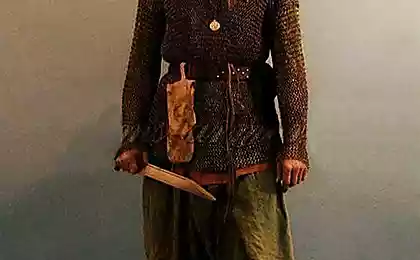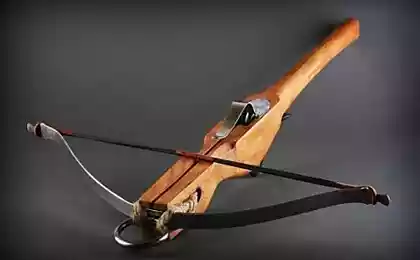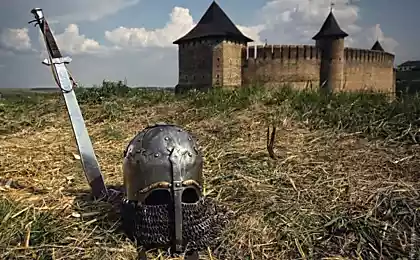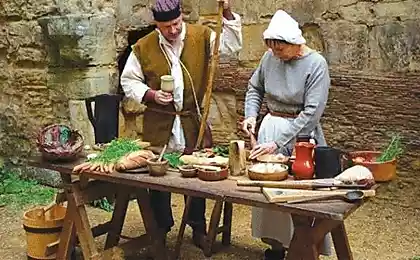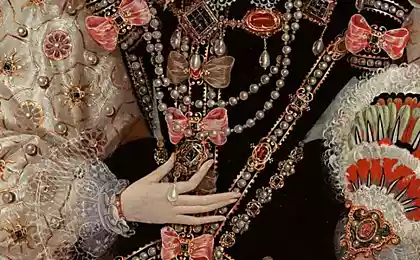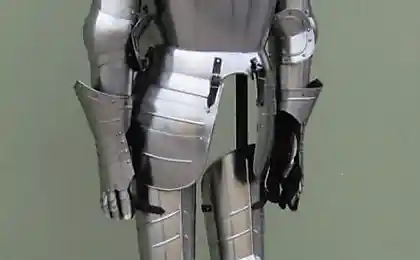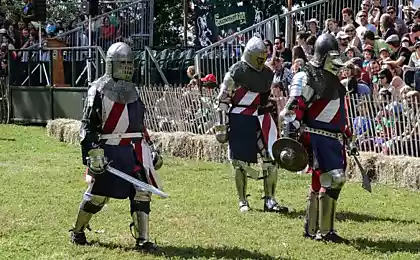6706
Medieval Armor (31 photos)
In medieval times, life was not easy, clothing has played an important role in the flesh to save lives.
Simple clothing fragile tissue was commonplace, the skin was considered a rarity, but the armor was worn only by the wealthy gentlemen.
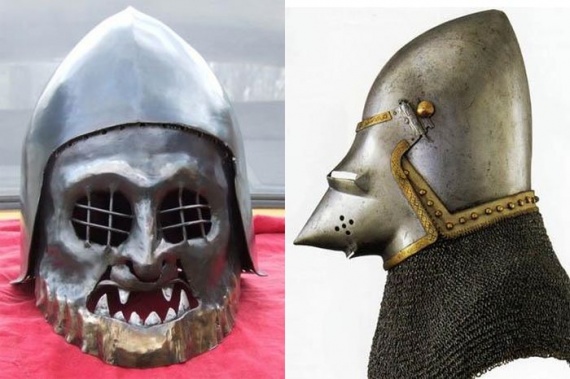
Armet of Henry VIII, known as & quot; Carapace with horns & quot ;. Innsbruck, Austria, 1511
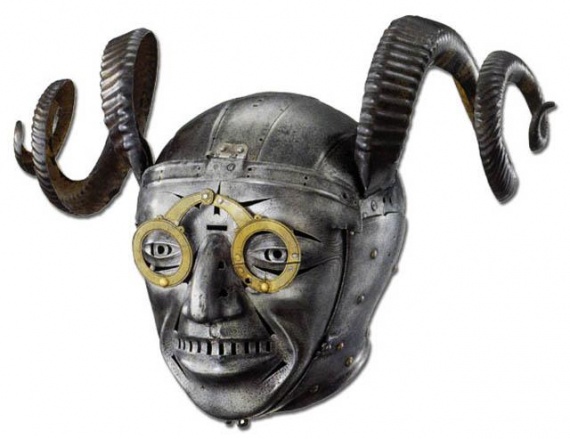
There are several theories regarding the appearance of the first armor. Some believe that it all started with robes made of wrought iron. Others believe that the protection of wood must also be considered, in this case, we need to remember the truly distant ancestors with stones and sticks. But most people think that the armor came from those hard times, when men were knights, and women languishing in their expectations.
Another strange shell mask, from Augsburg, Germany, 1515.
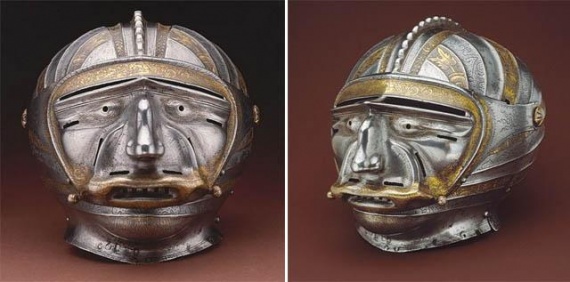
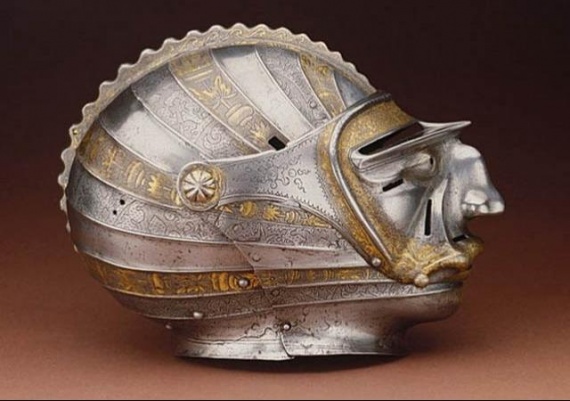
Variety of shapes and styles of medieval armors should be a separate article:

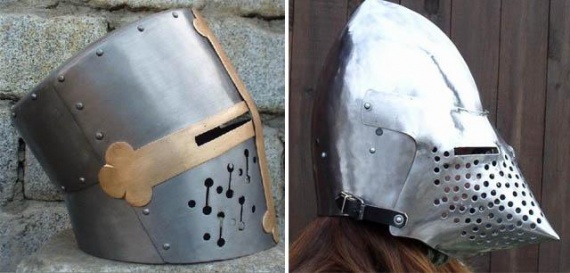


Or armor, or anything
The first armor was very simple: roughly shaped metal plates designed to protect the knight that is inside them, from spears and swords. But gradually became more and more weapons complicated, and blacksmiths had to take this into account and make armor more durable, lightweight and flexible, as long as they will not have maximum protection.


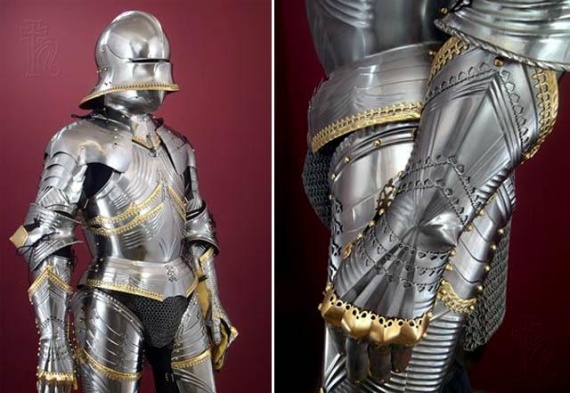
One of the most brilliant innovation was to improve the chain mail. According to rumors, the first time it created the Celts centuries ago. It was a long process that took a very long time before him did not take gunsmiths who brought this idea to new heights. This idea is not entirely logical: instead produce armor plates made of strong and highly reliable metal, why not make them out of several thousand carefully connected rings? Get amazing: lightweight and sturdy, chainmail allow its possessor to be mobile and is often a key factor in how he left the field of battle: on horseback or on a stretcher. When the armor of the plates were added to the chain mail - the result was stunning: there armor of the Middle Ages.

Medieval arms race
Now it is difficult to imagine that for a long time a knight on a horse was truly terrible weapon of the era: arriving at the scene of the battle in the war horse, often also clad in armor, he was as terrible as it is unbeatable. Nothing could prevent such knights as they, sword and spear, could easily attack almost any.
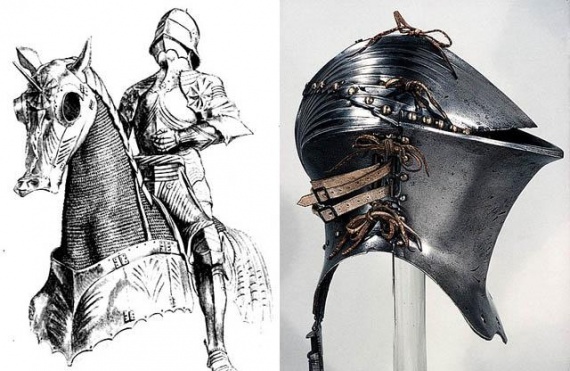

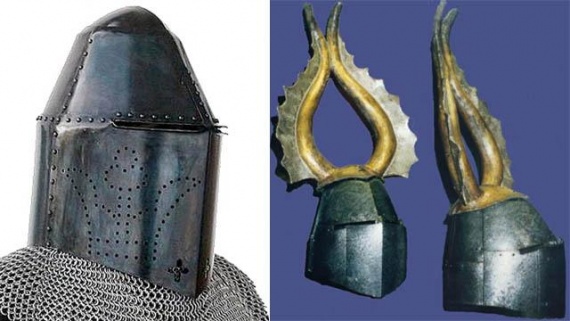
Here is an imaginary knight, reminiscent of the heroic and victorious times (drawn delightful illustrator John Howe):
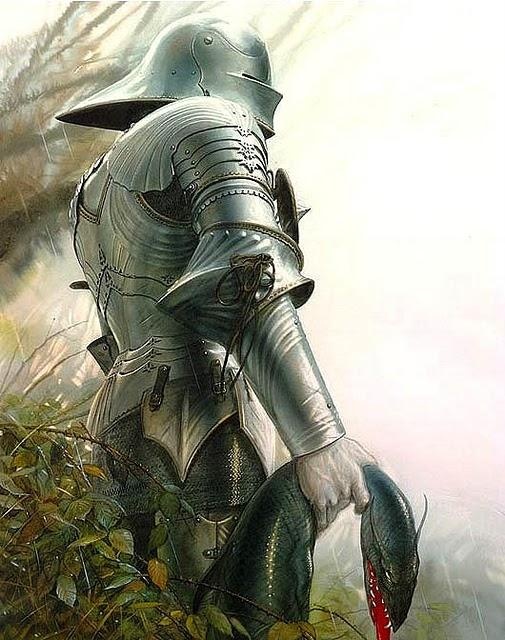
Bizarre monsters
The battle became more and more & quot; & quot ;, a ritual that led to the jousting tournaments, which we all know and love from the films and books. Armor become less useful in practice and gradually become more but is an indication of high social status and wealth. Only the rich or the nobility could afford armor, but only the truly rich or very wealthy baron, duke, prince or king could afford fantastic armor super.
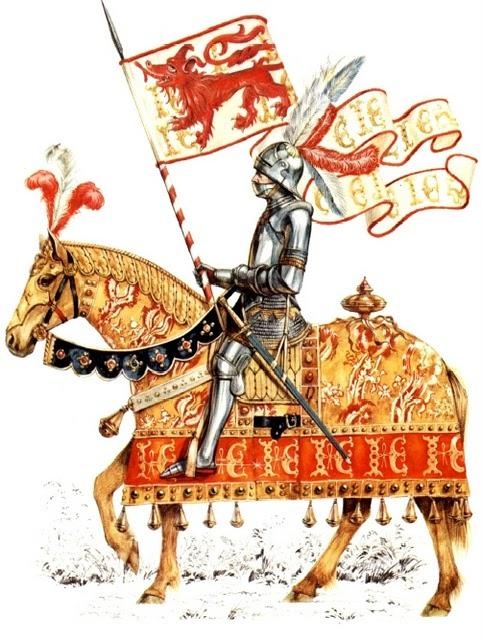
They became from this very beautiful? After a while the armor began to look more like clothes for dinner, rather than equipment for Battle: flawless metal work, precious metals, frilly emblems and insignia ... All this, though looked amazing, but it was useless during the battle.
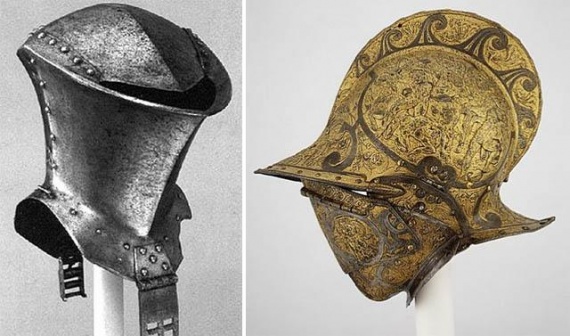


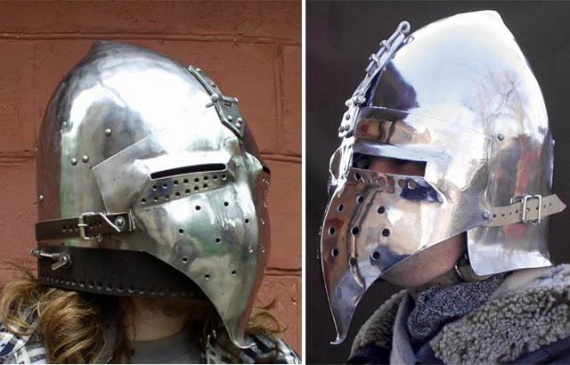
Just look at the armor belonging to Henry VIII: are they not a masterpiece of art of that time? Armor was designed and manufactured, like most of the armor of the time, the size of the holder. In the case of Henry, however, his suit looked more noble than intimidating. And who can remember the royal armor? Looking for a set of armor, the question arises: they invented to fight or to brag about? But to be honest, we can not blame Henry for his choice: his armor in fact never designed for war.
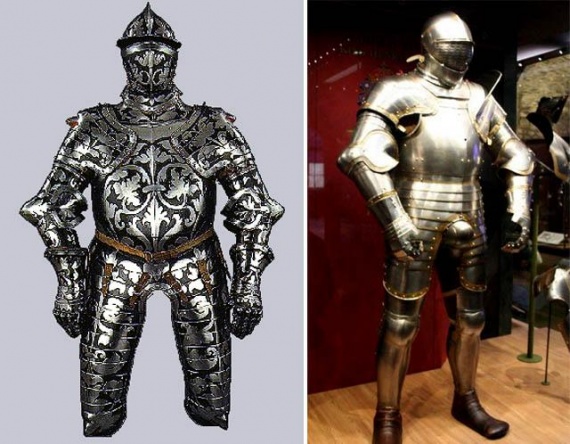


England put forward the idea
There is no doubt that with the armor suit was terrifying weapons of the day. But any day to an end, and in the case of classical armor, their end was just awful nowhere.
1415, northern France, on the one hand - the French; the other - the British. Although their number - a moot point, in general, it is believed that the French surpassed in number the British in the ratio of 10 to 1. For the English, under Henry (5th, the patriarch of the aforementioned 8th), it was not a pleasant one. Most likely, they are using the military term, will be & quot; killed & quot ;. But then something happened that not only determined the outcome of the war, but also changed Europe forever, as well as condemned the death of armor as their primary weapon.
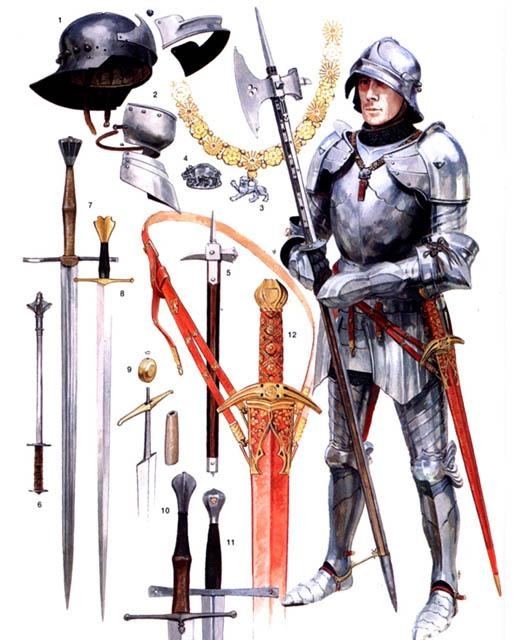
The French did not know what hit them. Well, actually, they knew, and it made them defeat even more frightening: it is they were, & quot; cream & quot; French infantry outfit, going to the apparent victory, their chain mail and plate, sparkling in the sun, their monstrous metal armor and the best defense in the world ...
They began to fall arrows shot from a secret weapon Henry: English (to be precise, Welsh) longbow. Several volleys - and the French were defeated by the enemy, which could not even come close, they were precious armor cushions for pins, and the army - trampled in the muddy ground.
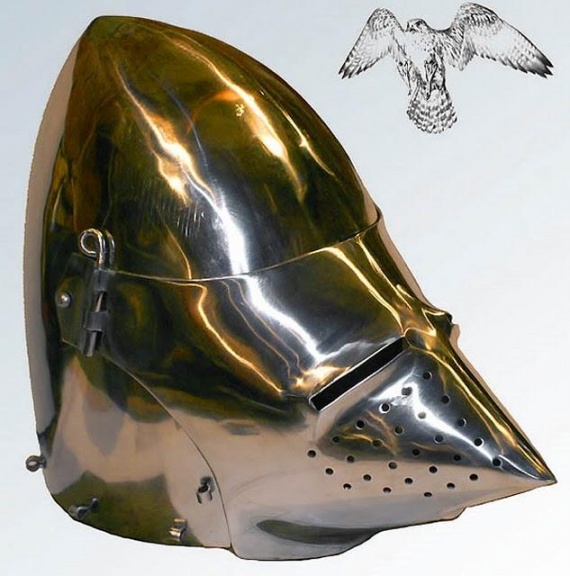
Clothing says a lot about a person. And for a very long time armor was the most versatile, suitable for almost all occasions apparel that time. But times are changing. In our case, this greatly helped several people with little bows and arrows.
Armor of World War
Armor Brewster, 1917-1918 Year:

Pilot gunner helmet, 1918:

If the level of protection provided by the helmet does not seem enough, you can try to climb into the mobile protection supplemented with four wheels (this mobile coffin):

Some British & quot; face protection system & quot; looked frankly stupid. Belgian samples also did not shine grace:

And finally, the original costumes pilots face protection 1917, awful outfits like pilots from the & quot; Star Wars & quot ;:
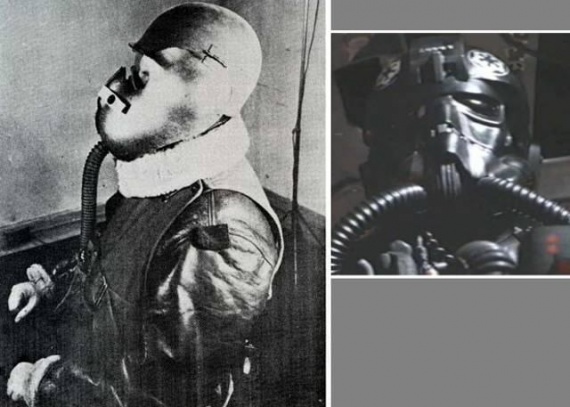
Source: p-i-f.livejournal.com
Simple clothing fragile tissue was commonplace, the skin was considered a rarity, but the armor was worn only by the wealthy gentlemen.

Armet of Henry VIII, known as & quot; Carapace with horns & quot ;. Innsbruck, Austria, 1511

There are several theories regarding the appearance of the first armor. Some believe that it all started with robes made of wrought iron. Others believe that the protection of wood must also be considered, in this case, we need to remember the truly distant ancestors with stones and sticks. But most people think that the armor came from those hard times, when men were knights, and women languishing in their expectations.
Another strange shell mask, from Augsburg, Germany, 1515.


Variety of shapes and styles of medieval armors should be a separate article:




Or armor, or anything
The first armor was very simple: roughly shaped metal plates designed to protect the knight that is inside them, from spears and swords. But gradually became more and more weapons complicated, and blacksmiths had to take this into account and make armor more durable, lightweight and flexible, as long as they will not have maximum protection.



One of the most brilliant innovation was to improve the chain mail. According to rumors, the first time it created the Celts centuries ago. It was a long process that took a very long time before him did not take gunsmiths who brought this idea to new heights. This idea is not entirely logical: instead produce armor plates made of strong and highly reliable metal, why not make them out of several thousand carefully connected rings? Get amazing: lightweight and sturdy, chainmail allow its possessor to be mobile and is often a key factor in how he left the field of battle: on horseback or on a stretcher. When the armor of the plates were added to the chain mail - the result was stunning: there armor of the Middle Ages.

Medieval arms race
Now it is difficult to imagine that for a long time a knight on a horse was truly terrible weapon of the era: arriving at the scene of the battle in the war horse, often also clad in armor, he was as terrible as it is unbeatable. Nothing could prevent such knights as they, sword and spear, could easily attack almost any.



Here is an imaginary knight, reminiscent of the heroic and victorious times (drawn delightful illustrator John Howe):

Bizarre monsters
The battle became more and more & quot; & quot ;, a ritual that led to the jousting tournaments, which we all know and love from the films and books. Armor become less useful in practice and gradually become more but is an indication of high social status and wealth. Only the rich or the nobility could afford armor, but only the truly rich or very wealthy baron, duke, prince or king could afford fantastic armor super.

They became from this very beautiful? After a while the armor began to look more like clothes for dinner, rather than equipment for Battle: flawless metal work, precious metals, frilly emblems and insignia ... All this, though looked amazing, but it was useless during the battle.




Just look at the armor belonging to Henry VIII: are they not a masterpiece of art of that time? Armor was designed and manufactured, like most of the armor of the time, the size of the holder. In the case of Henry, however, his suit looked more noble than intimidating. And who can remember the royal armor? Looking for a set of armor, the question arises: they invented to fight or to brag about? But to be honest, we can not blame Henry for his choice: his armor in fact never designed for war.



England put forward the idea
There is no doubt that with the armor suit was terrifying weapons of the day. But any day to an end, and in the case of classical armor, their end was just awful nowhere.
1415, northern France, on the one hand - the French; the other - the British. Although their number - a moot point, in general, it is believed that the French surpassed in number the British in the ratio of 10 to 1. For the English, under Henry (5th, the patriarch of the aforementioned 8th), it was not a pleasant one. Most likely, they are using the military term, will be & quot; killed & quot ;. But then something happened that not only determined the outcome of the war, but also changed Europe forever, as well as condemned the death of armor as their primary weapon.

The French did not know what hit them. Well, actually, they knew, and it made them defeat even more frightening: it is they were, & quot; cream & quot; French infantry outfit, going to the apparent victory, their chain mail and plate, sparkling in the sun, their monstrous metal armor and the best defense in the world ...
They began to fall arrows shot from a secret weapon Henry: English (to be precise, Welsh) longbow. Several volleys - and the French were defeated by the enemy, which could not even come close, they were precious armor cushions for pins, and the army - trampled in the muddy ground.

Clothing says a lot about a person. And for a very long time armor was the most versatile, suitable for almost all occasions apparel that time. But times are changing. In our case, this greatly helped several people with little bows and arrows.
Armor of World War
Armor Brewster, 1917-1918 Year:

Pilot gunner helmet, 1918:

If the level of protection provided by the helmet does not seem enough, you can try to climb into the mobile protection supplemented with four wheels (this mobile coffin):

Some British & quot; face protection system & quot; looked frankly stupid. Belgian samples also did not shine grace:

And finally, the original costumes pilots face protection 1917, awful outfits like pilots from the & quot; Star Wars & quot ;:

Source: p-i-f.livejournal.com
Life on the screen. Jason Staten (47 photos)
Ten interesting facts about kinship surrounding flora and fauna (10 photos)


